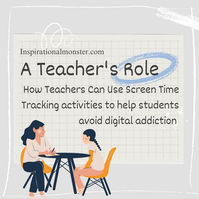“There is no doubt that creativity is the most important human resource of all. Without creativity, there would be no progress, and we would be forever repeating the same patterns. -”Edward de Bono
THE ORIGINALITY IN SELF-EXPRESSION
Creativity or art is an extremely tough mental process to study. In simple terms, our ability to generate connections between widely different aspects of our environment and to ascribe some meaning and/or utility to it can be considered a consequence of creative effort. Creativity can also be viewed as a process of arriving at innovative solutions to problems at hand. Creativity involves four stages. Preparation consists in collecting materials and resources and information regarding the problem. This helps in getting people acquainted with the nuances of the problem. Incubation is a stage of stagnation where the person does not think about the problem consciously, and the mind is allowed to rest. Illumination involves a ‘Eureka Moment’ that comes from the incubatory period. Finally, verification involves the person going ahead to verify the effectiveness of the solution obtained.
Research conducted over decades has pointed to the importance of the period of incubation as an essential stage for arriving at a solution. When we think of a problem consciously, our cognitive systems are bombarded with a lot of information in addition to the emotional disappointment as a result of not being able to come up with solutions.
On the other hand, when we take our minds off of the problem and indulge ourselves in other activities, there is space for establishing new and novel connections between various ideas. Navarre (1979) emphasizes the role of reverie (daydreaming) in the creative process. The paper suggests that spontaneous thoughts and interlinkage are the ones that lead to illumination. The artist already knows his/her inspiration but requires a context to apply his inspiration and incubation is the stage that provides an environment for this. The paper also insists that the education system provides children time to daydream and reflect on their own thoughts without time limitations.
WHAT TYPE ARE YOU?
Our ability to develop original, distinctive, or novel ideas in some way is reflected in our creativity. Biological clocks are organisms’ naturally occurring internal clocks that regulate the cycle of the circadian rhythm. They’re made up of specialized molecules (proteins) that interact with the body’s cells. Biological clocks can be found in almost every tissue and organ. Circadian rhythms are 24-hour cycles of physical, behavioral, and mental changes. Living things are affected by these natural processes, which are predominantly affected by light and dark.
Many physiological systems, such as attentiveness, heart rate, and body temperature are influenced by circadian rhythms. According to recent studies, circadian rhythms also impact our cognitive abilities. Circadian rhythms indicate whether you are a “morning-type” or “evening-type” person and are frequently assessed with the Morningness-Eveningness Questionnaire, which is a simple paper-and-pencil test.
NON-IDEAL TIME AND CREATIVE BOUTS
Width and Zacks (2011) examined participants performing insight and analytic questions at their optimal or non-optimal time of day, evaluating the influence of time of day on problem-solving. Insight issue solving performance was consistently higher during non-optimal times of day compared to ideal times of day, but there was no consistent time of day impacts on analytic problem-solving. The findings suggest that tasks requiring creativity may benefit from working at an inconvenient hour.
We filter out the distractions in our life and focus on the work when we function at our optimal time of day. Numerous studies have shown that we perform best on difficult, attention-demanding tasks when we are at our optimal time during the day. When you’re fatigued, your brain has a harder time sifting out distractions and concentrating on a single job. It also becomes inefficient in recalling links between ideas or concepts. When it comes to creative work, these are both positive traits because it needs us to develop new connections, be open to new ideas, and think in new ways.
Proof in Reality and Research
Research conducted by British psychologist Sandi Mann involved two groups. The first was asked to copy down phone numbers, a boring task, and come up with novel ideas to use plastic cups. The second group was just asked to come up with innovative ideas to use plastic cups. The results revealed that the first group who were involved in copying numbers and at the same time asked to generate ideas were more creative relative to the second group that was directly brainstorming. These results mean that monotony gave participants the motivation and space to develop novel and innovative ideas as an attempt to break the monotony. These inferences are supported by many other artists, poets, and writers who say that boredom provides a space for mind-wandering which is an attempt to fill the cognitive space with something stimulating. This wandering eventually results in creative outcomes.
FEW LAST WORDS
The age-old belief that creativity springs during one’s most active hours is starting to be proved as partially correct. The other half of the truth accounts for creativity springing during the non-optimal hours of one’s day. With this topic coming to light, a new era of innovation in the most unexpected of times can be looked forward to. A new perspective on creativity can help with creative blockage and encourage people to find a way around it efficiently.











Comentários